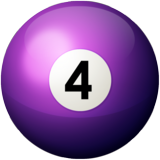By Saeed Khan
I’ve been helping a couple of friends get their small businesses off the ground. These are not technology or software companies, but simply, small local service businesses. I’m helping them because they are my friends, but also because I think each has the seeds of a real, sustainable business. But to help them get clarity and focus on their business I’ve asked each of them to try to answer the four questions listed in this post. I thought it would be a good idea to bring them back from the archives and share again with all of you. Let me know what you think.
——-
 Way back…I mean way, way back — I think it was in the 1980s — yes, that far back, I started a small consulting business with a friend.
Way back…I mean way, way back — I think it was in the 1980s — yes, that far back, I started a small consulting business with a friend.
One of the best decisions we made early on was to find a mentor – Reid – who could help guide us as we moved forward. Reid was a young, but successful VC.
Having more enthusiasm than experience, we had lots of ideas for what we could do. And we’d run these ideas by Reid. He gave his feedback each time, but after a few of these sessions, instead of fishing for us, Reid decided to metaphorically, teach us to fish.
Reid passed on some advice that I still remember to this day.
For every idea, he told us to ask ourselves 4 questions. And if we could honestly answer those 4 questions and were satisfied with our answers, the idea was likely one we should pursue. The 4 questions were:
- What problem(s) are you solving?
- Who are you solving them for?
- What is your competitive advantage?
- Is the competitive advantage sustainable?
Now let’s analyse each. And although these were asked in the context of consulting, they totally apply when thinking about products. Because what else is consulting, if not productizing services.
What problem(s) are you solving?
This is pretty straight forward. As a consultant, you must be solving a problem for someone. Our ideas were usually described as solutions; but solutions to what? Reid was forcing us to be very clear about the problems our consulting services would solve for potential customers. We had to be able to articulate that clearly.
Who are you solving them for?
And the follow up question, fundamentally asked, who the buyer was? Implicit in these two questions was a 3rd question, which was, does that “who” care about solving “those problems”? i.e. is the problem really a problem the person would pay us money to solve.
What’s your competitive advantage?
This was an interesting question, and one that – way back then – I didn’t really understand well. But clearly what he was asking was why would they hire us? What skills, knowledge or extra value were we providing that would be hard for them to get elsewhere. This was a really difficult question to answer, especially because we hadn’t really thought much about who our competition was? But competition could also mean other alternatives already available to them, which unfortunately often included, do nothing.
Is the competitive advantage sustainable?
Another not so easy question for us. We couldn’t answer question 3 well, so how could we answer question 4? But this was in fact the linchpin question. There’s no point in embarking into a business unless you can define how you can keep ahead of (or at minimum abreast with) the competition.
What is the “secret sauce” or IP or business model or other differentiator you have over others? It may be simple or complex, but you need to understand it and be able to articulate it, because otherwise, you’re just another little fish in the big pond.
These 4 questions left an impression on me and I regularly think about them when looking at new product ideas. If the answers aren’t satisfactory, then either more research is needed or the idea is a dud.
Ask yourself, could you easily answer these 4 questions for any products you manage, or for any new products you’re looking to bring to market?
Saeed
Tweet this: 4 questions to help determine the value of your new product (or service) http://wp.me/pXBON-3W8 #prodmgmt
About the author
 Saeed Khan is a founder and Managing Editor of On Product Management, and has worked for the last 20 years in high-technology companies building and managing market leading products. He also speaks regularly at events on the topic of product management and product leadership.
Saeed Khan is a founder and Managing Editor of On Product Management, and has worked for the last 20 years in high-technology companies building and managing market leading products. He also speaks regularly at events on the topic of product management and product leadership.